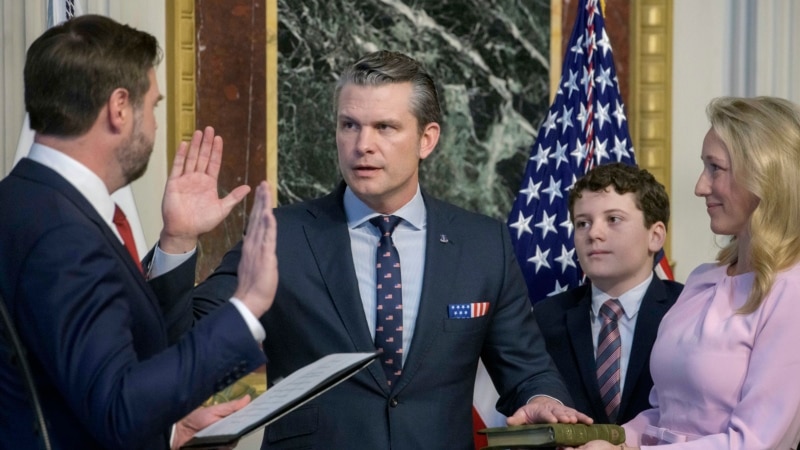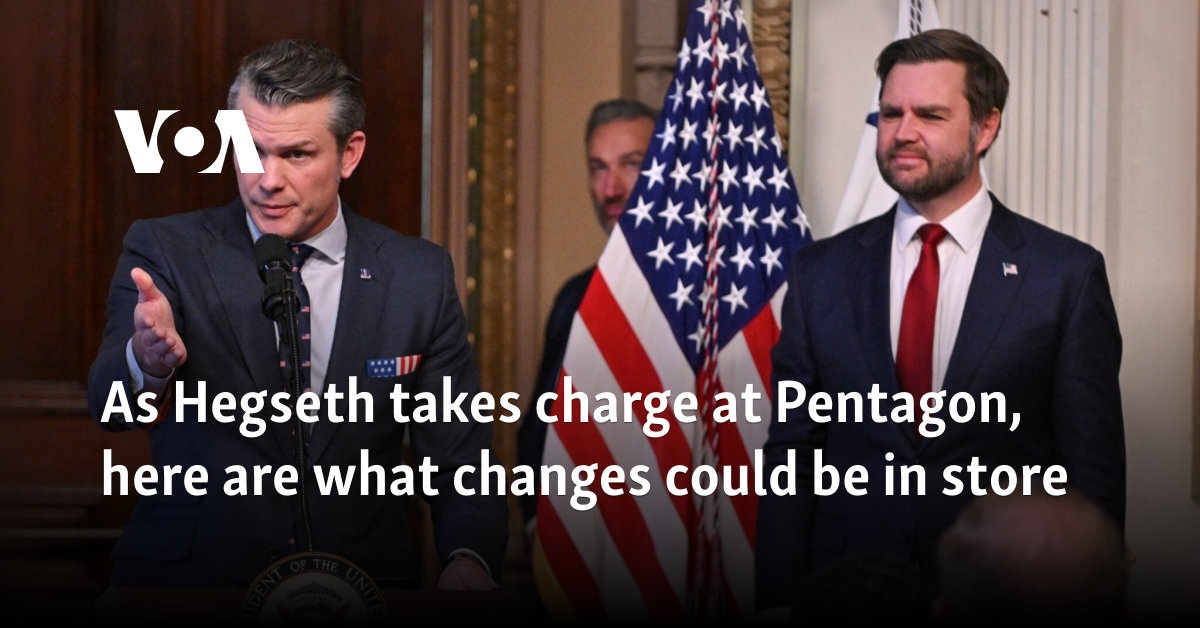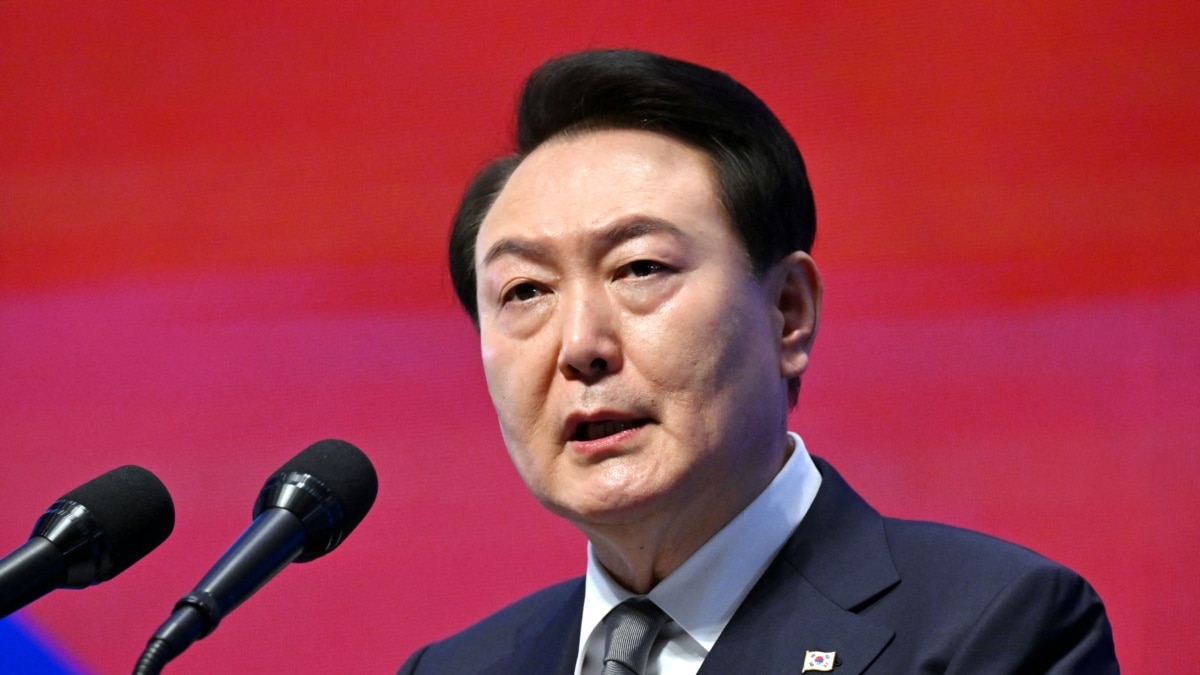
When Defense Secretary Pete Hegseth begins his first official day Monday morning, he’ll face a daunting array of issues to deal with — from global conflicts and border security to administrative tasks.
At the top of their list are addressing President Donald Trump’s priority of strengthening the U.S. military presence along the southern border and reviewing whether active duty forces should be used for the uptick.
Dozens of other issues will compete for his attention, including developing the Pentagon’s massive budget, decisions about aid to Ukraine, support for a ceasefire in Gaza, troop deployments to the Middle East. Not to mention Trump’s directives to rid the federal government of diversity programs and personnel, as well as cut waste and appellate lobbying as Biden administration moves to alienate backers.
In a message to the force shortly after being sworn in Saturday, Hegseth cited the challenges he saw ahead. Some of his predecessors are, so confronted, searching for ways to reinvent the military and better determine China from decades of Middle East focus. Continued conflict in the region, including an October 2023 attack on Israel by Hamas, has made that transition impossible to execute.
Hegseth told service members about other priorities, including expanding the defense industrial base and passing an audit to audit the Pentagon, while ensuring that the United States remains “the strongest and most powerful in the world.” remains a deadly force.
The Unanno-Anticipated STOP was made to the Pentagon on Saturday after Ironhower’s swearing in ceremony at the Executive Office Building. There was no media coverage of his arrival. The Pentagon later said in an official photo that Hegseth was “ready to serve on the staff of America’s warfighters.”
Already, support staff are meeting with military leaders, including Chairman of the Joint Chiefs of Staff CQ Brown Jr. But Hegseth will get to experience what many describe as “drinking from a firehose” as he quickly works to understand what his mere 2.1 million service members and 780,000 civilians in the department are going through. Tens of thousands of them are serving overseas, including in combat zones.
Then there are the cultural issues that Hegseth glossed over as a media personality, which didn’t make it into Hegseth’s message to the Army. Many are expected to surface in the coming days.
Here are some of the key issues that Hegseth, who was confirmed by Vice President J.D. Vance on Friday in a tiebreaking vote, will confront immediately:
border deployment
In trying to meet Trump’s demand to secure the border, Hegseth will be faced with information about what troops are available, what Border Patrol assistance is needed and where, as well as how to house, feed and How to transport and border personnel to ensure that none of this impacts other national security needs.
One of his first major decisions is whether he wants to recommend that active-duty troops deployed to the border join law enforcement, a move that military leaders have pushed to avoid in recent years. Is.
Active duty forces are prohibited from performing law enforcement duties on US soil under the Posse Comitatus Act. Trump has signed an executive order requiring his Defense and Homeland Security secretaries to report back to Whitridge on the whims that they should repeal the 1807 law called the Insurrection Act, which allows troops to be used for civilian law enforcement purposes on the US. Gives.
During previous deployments, troops have been used for transportation, intelligence, logistics, wall-building and other support functions, equipping the Border Patrol to interact with migrants and conduct law enforcement duties.
transgender soldier
In his first executive order, Trump again stripped protections for transgender troops that Democratic President Joe Biden had restored after Trump banned them from serving during his first term in office.
The ban previously faced legal challenges, and lawyers who represented transgender forces last time are set to take to the courts again. While Trump has not announced a ban, his decision to revoke the protections is a first step toward it.
It is unclear how many soldiers will be affected. There is absolutely no data on the number of transgender troops serving in the Department of Defense because not every transgender person is at the same stage of medical transition and not every transgender person identifies as transgender on military paperwork.
The department has raised questions about how many transgender soldiers the services have; The services have said they have no way to track.
Budget and Ukraine
Hegseth will have to juggle the complex construction of the Pentagon budget, which currently stands at about $850 billion. Trump ran on a pledge to make the US military more lethal – something Hegseth echoed. But that’s why he has talked extensively about cutting waste.
So Hegseth’s imprint on the budget merits study to determine how it is happening.
Woven into those discussions is the desire to provide security assistance to Ukraine. The State Department ordered a freeze on new funding for almost all US foreign aid, and there was no sign of a waiver for military aid to Ukraine like there was to Israel and Egypt.
The Biden administration provided Kiev more than $66 billion in military aid and weapons during the war with Russia. This left about $3.85 billion in congressionally authorized funds to send more weapons to Ukraine from existing US stockpiles – an amount that is not affected by the foreign aid freeze. But now it’s up to Hegseth and Trump to decide whether to spend it, and Trump hasn’t said what he would do on Ukraine aid.
Diversity, Equity and Inclusion Rollback
Hegseth captured the Pentagon’s push to implement Trump’s executive order to get rid of DEI programs, which will come as military officials wonder if they will be burned for being “woke,” as Hegseth hastened to say. Was.
During his Senate hearings, Hegseth reaffirmed his commitment to focusing on lethality and eliminating lethality, arguing that DEA policies “divided” troops and did not prioritize “competency.”
The Defense Department has no full-time workers assigned to DEI, so they are not expected to fire them, as other federal agencies have, officials said.
But senior leaders are poring over their websites to remove pages that mention diversity. Lacking clear guidance, employees were often pulling down websites in inconsistent ways. For example, the Army temporarily removed its sexual assault guidelines, before they were later brought back online.
Hegseth railed against women in her books and podcasts and said that the standards were lowered for them, which is not true. He has had his criticism taken down after substantial pushback from MPs.
Hey recently told senators he had no idea whether Trump wanted to reverse the decision to allow women to serve in all combat jobs. Instead, he has talked about reviewing the standards.
reproductive care
In 2022, the Supreme Court ended the constitutional protections established in Roe v. Wade, then-Deputy Secretary Lloyd Austin came out with a policy that would allow service members to take leave and be reimbursed for travel expenses to receive reproductive care—including abortion and in-vitro fertilization. Was doing. The state had banned that care.
It is unclear whether Hegseth will try to further modify that policy to remove the reimbursement commission. It’s only rarely used, and the department doesn’t break down what the trip was for due to medical privacy laws.






Leave a Reply